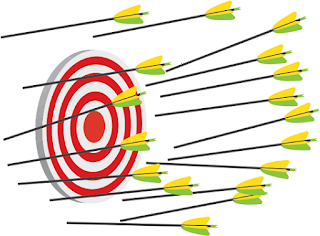How To Price Your Product Realistically And Avoid Common Mistakes
Setting price for a product is tough - keep it high and miss
out on valuable sales. Set it low and miss out on revenue target. Fortunately,
there are industry conventions and realistic ways of determining final price.
This articles discusses how to realistically price a product keeping in mind
distribution cost and avoid common mistakes.
Choice of distribution channel plays major part in
determining right end-user or consumer price. The journey of a product from
factory gate to consumer door passes through a chain of businesses or
intermediaries - CNF agents, super stockists, wholesalers, distributors, retailers
etc. Each of these intermediaries charge a fee or commission (called mark-up).
Manufacturer must take into account all these commissions while determining
final end-user price. Sum of all these commissions to intermediaries is
collectively called trade margin. So, Final Price = Product Cost +
Manufacturer's Profit + Trade Margin.
Realistic
Trade Margin
While manufacturing cost and profit margin is known -
manufacturer has to estimate a realistic trade margin figure that takes into
account intermediary commissions + discounts. The figure varies from product to
product and market to market. General consensus is a range between 2.5X - 4X of
manufacturing cost. So, if the manufacturing cost is Rs. 20.00 - the final price
could be between Rs. 50 to Rs. 80.
Approximate
Structure Of Trade Margins
Trade margin is not static - it varies widely on various
factors, such as:
- Industry FMCG, Healthcare, Food, Apparel etc.
- Market Premium, Base of Pyramid, Urban, Rural etc.
- Product Fragile, Heavy Weight, Perishable, Requiring special treatment (e.g. cold storage)
Depending on demand, availability, cost of handling,
logistics, storage requirement and various other factors - trade margins may be
decided. For FMCG sector, a rough trade margin structure is as follows:
- CNF Agent / Super Stockist : 3 - 8 percent
- Distributor : 8 - 20 percent
- Retailer : Upward of 20 percent
*All figures in percentage of end-user/consumer price
As one can see, total trade margin may be between 30 - 50
percent of consumer price.
MRP and
MOP
For many products, particularly pharmaceuticals, Govt has
set a maximum retail price called MRP (Maximum Retail Price). Selling above MRP
is a punishable offense. For products where there is no Govt mandated MRP -
competitor's price could be considered as market rate. Manufacturer-calculated
final price must be in consonance with MRP or prevailing market rates.
So, marketers have introduced another concept - MOP. MOP or
Market Operating Price is the price at which manufacturers make available a
product to retailers. By definition, MOP is lower than MRP and the difference
is retailer's margin - part of which may be offered as discount by retailers to
beat competitor products. The retailer
is free to fluctuate his selling price as long as it is below or equal to the
MRP and above or equal to the MOP.
Balancing
MOP and Competition
High MRP and low MOP could be a deterrent factor for many
products, particularly where competition is stiff. So, manufacturers often set
a minimum order value for retailers to qualify for higher trade margin. In
addition, discounts, incentives, schemes etc. are offered to retailers for
achieving higher sales. Distributors are rewarded with incentives for achieving
targets. All these offers and incentives are generally over and above trade
margins. So, estimated trade margins must keep provision for discounts and incentives.
Common Pricing Mistakes
Myth Of Price As A Tool To Beat Competitors
Using price or rather low price as a weapon to beat the
competition is a shaky proposition. Buyers may be attracted this way - but they
are unlikely to remain loyal. If low cost attracted them to your business, they
may abandon your company when a less expensive option comes along. A better
approach is to differentiate your business from competitors in other ways, such
as superior customer service, enhanced product features, or finer quality.
There's a Subtle Link Between Price and Quality
Consumers instinctively attach a higher value on high priced
products. This is specially so in premium market segment. Offering a low cost
alternative to a high priced product may be viewed with suspicion - sinking
overall brand value. This is not to advocate high prices - but to make
entrepreneurs aware of pitfalls of very low price.
Myth Of Market Capture Through Low Price
Many entrepreneurs believe that setting low price is enough
to capture a market. Though it may be partially true in certain cases, there's
another important condition that must be fulfilled - price elasticity. If
demand rises with lowering price - the product is elastic. However, if price
elasticity does not hold - entrepreneur is set to make deadly mistake by
underselling.
Dilemma Of Raising Price
Increased demand or rising input cost may put one in
quandary - whether or not to raise prices. Some business owners avoid increases
because of fear of losing customers. However, the flip side is losing opportunity
at best and making loss at worse. It
could be a better strategy to make regular, small price increases than to hit
customers with one large increase. In other words, a 10 percent price increase
is likely to draw more negative attention than two 5 percent increases.
Dropping Price At The Drop Of A Hat
Lowering an agreed price at last minute may inadvertently
send a negative message that initial prices were too high, that all future
business is open to price negotiation. A better approach is to agree to a lower
price through a give-and-take negotiation such as slight change in supply condition
(e.g. delivery time). This helps you earn customer's respect and future-proofs
rest of order.
Conclusion
Best pricing strategy is the one that maximizes profit and
revenue. The trade-off between profit and revenue is finely balanced - a
nuanced pricing strategy helps organizations keep the balance steady.


Comments
Post a Comment